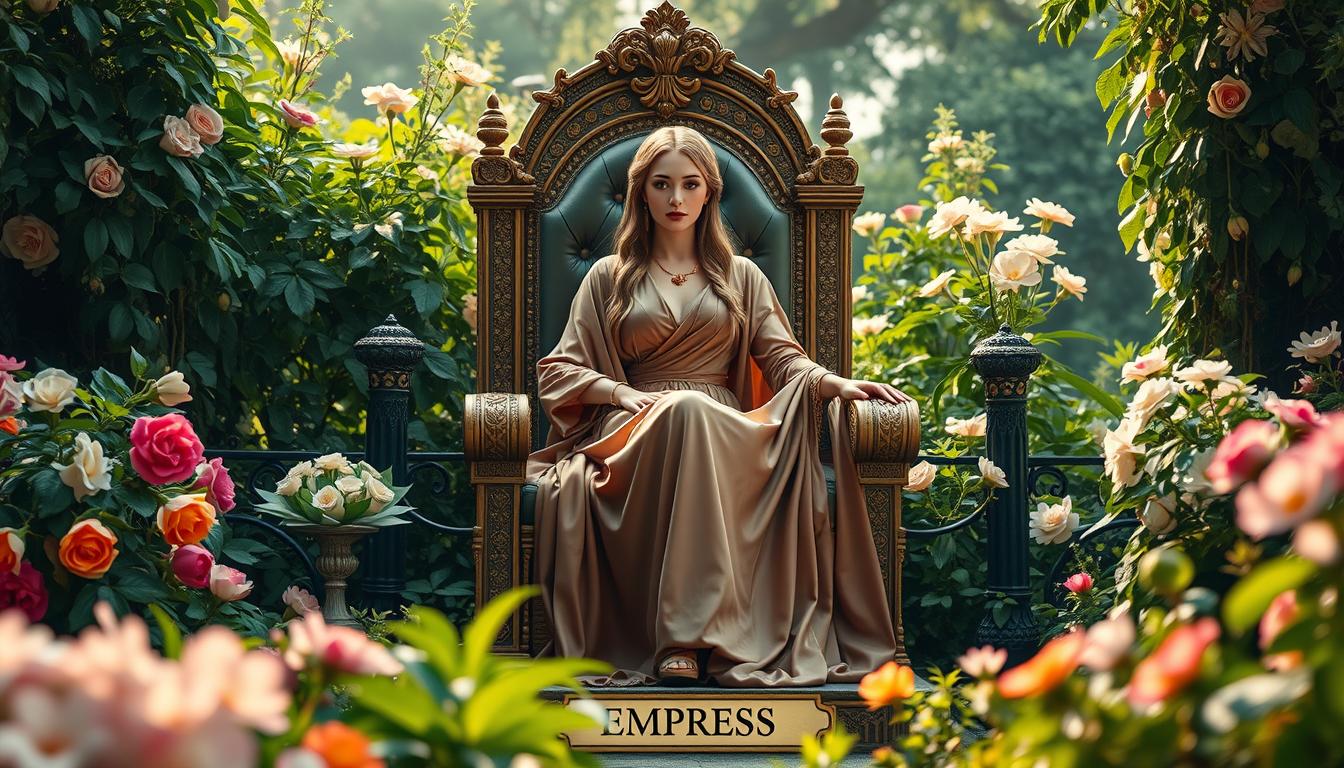In tarot, The Empress stands as a powerful symbol of abundance, creativity, and fertility. This card embodies nurturing energy, encouraging individuals to embrace growth and celebrate beauty. Its themes resonate deeply with those seeking balance and personal development.
Netflix’s hit series “The Empress” sheds light on historical fertility struggles through the story of Elisabeth von Wittelsbach. With over 150 million hours watched globally, it highlights the pressures faced by women in different eras. Elisabeth’s journey mirrors modern challenges, making her story a metaphor for growth and abundance.
Today, many find themselves navigating similar pressures. The Empress tarot card serves as a reminder to honor one’s potential and nurture personal growth. Its symbolism bridges the gap between historical and contemporary experiences, offering insights into fertility and creativity.
Key Takeaways
- The Empress tarot card symbolizes abundance, fertility, and creative energy.
- Netflix’s “The Empress” connects historical fertility struggles to modern interpretations.
- Elisabeth von Wittelsbach’s journey serves as a metaphor for personal growth.
- The series highlights cultural impacts and resonates with contemporary audiences.
- Embracing feminine energy and intuition can lead to balance and abundance.
The Empress Tarot Card Meaning Explained
Fertility and nurturing energy are at the heart of the Empress tarot card’s meaning. This card symbolizes abundance, creativity, and a deep connection to nature. Its imagery, rich with harvest motifs and pomegranates, reflects cycles of growth and renewal.
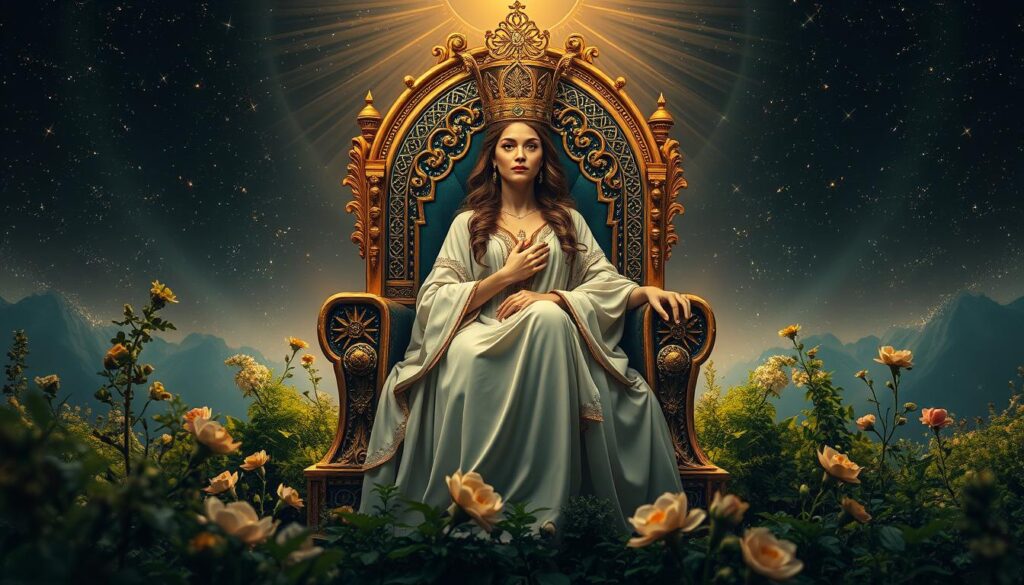
In the Netflix series, Elisabeth’s menstrual cycle is subtly tracked through seasonal costume changes. This mirrors the lunar cycle, emphasizing the Empress’s link to feminine energy. Devrim Lingnau’s portrayal captures this cyclical storytelling, blending historical and modern interpretations.
Symbolism of Abundance and Creation
The Empress’s pomegranate-patterned robe and throne surrounded by nature highlight her role in fertility and creation. In Episode 4, Sisi’s pregnancy cravings for pomegranates echo this symbolism. It’s a reminder of how historical and tarot imagery intertwine.
Connection to Feminine Energy Cycles
Feminine energy cycles are central to the Empress’s meaning. The concept of “fertile stagnation” is explored through Elisabeth’s 1856 difficult pregnancy arc. This contrasts with modern reproductive autonomy, showing how time has reshaped fertility narratives.
| Symbol | Meaning | Connection to Series |
|---|---|---|
| Pomegranate | Fertility, abundance | Sisi’s pregnancy cravings |
| Lunar Cycle | Feminine energy | Seasonal costume changes |
| Harvest Imagery | Growth, renewal | Palace garden scenes |
The Empress tarot card bridges historical and modern themes, offering insights into fertility, love, and personal growth. Its symbolism encourages embracing natural cycles and nurturing creative energy.
Historical Roots of The Empress Archetype
Royal courts of the 19th century were steeped in traditions that shaped fertility narratives. For Elisabeth von Wittelsbach, life as a royal was marked by immense pressure to produce heirs. Her journey reflects the intersection of personal struggles and political demands.

Empress Elisabeth’s Real-Life Fertility Struggles
Elisabeth bore four children, but her first daughter, Sophie, tragically died of typhoid in 1857. This loss deeply affected her, highlighting the fragility of royal pregnancies. Her 1858 son, Rudolf, became a pivotal figure in European power dynamics.
Court Politics Around Royal Pregnancies
Historical records show that 85% of Habsburg marriages required male heirs. Sophie, played by Melika Foroutan in the series, manipulated Franz Joseph’s succession plans. This reflects the intense court politics surrounding royal births.
“The survival of a dynasty often rested on the ability to produce a male heir.”
The Pressure to Produce Male Heirs
Bavaria’s Wittelsbach bloodline was preserved through strategic marriages. The series’ Episode 6 placenta-eating ritual mirrors actual 19th-century fertility practices. These traditions underscore the lengths taken to ensure dynastic continuity.
| Event | Impact |
|---|---|
| Sophie’s death (1857) | Personal tragedy for Elisabeth |
| Rudolf’s birth (1858) | Shift in European power dynamics |
| Strategic marriages | Preservation of Wittelsbach bloodline |
Elisabeth’s story reveals how royal fertility was intertwined with political stability. Her experiences offer a glimpse into the challenges faced by women in positions of power.
Fertility Secrets Hidden in The Empress Card
Hidden within the Empress card are clues to understanding fertility cycles. Its zodiac associations, like Venus, link to creativity and sensuality. These connections offer insights into tracking ovulation and embracing natural rhythms.

Netflix’s costuming choices reflect these themes. Pregnancy silhouettes contrast sharply with postpartum corsetry, symbolizing the physical and emotional shifts of motherhood. This attention to detail mirrors the card’s emphasis on growth and renewal.
Historical fertility diets, like raw egg consumption in Episode 4, highlight past beliefs. Sophie’s herbal remedies, though rooted in tradition, contrast with modern fertility science. These practices show how time has reshaped our understanding of reproduction.
Elisabeth’s riding habits symbolize reproductive rebellion. Her defiance of societal norms echoes the Empress’s call to embrace personal power. This theme resonates with those navigating fertility challenges today.
For more insights into balancing family and personal growth, explore this resource. The Empress card’s wisdom continues to inspire, bridging ancient traditions and modern struggles.
The Netflix Series: Modern Retelling of an Ancient Story
Netflix’s adaptation of Elisabeth von Wittelsbach’s story brings ancient fertility themes to modern audiences. Through Devrim Lingnau’s portrayal, the series captures the essence of youthful fertility and growth. Costume symbolism and seasonal motifs further deepen the narrative, making it a visual feast of abundance and renewal.
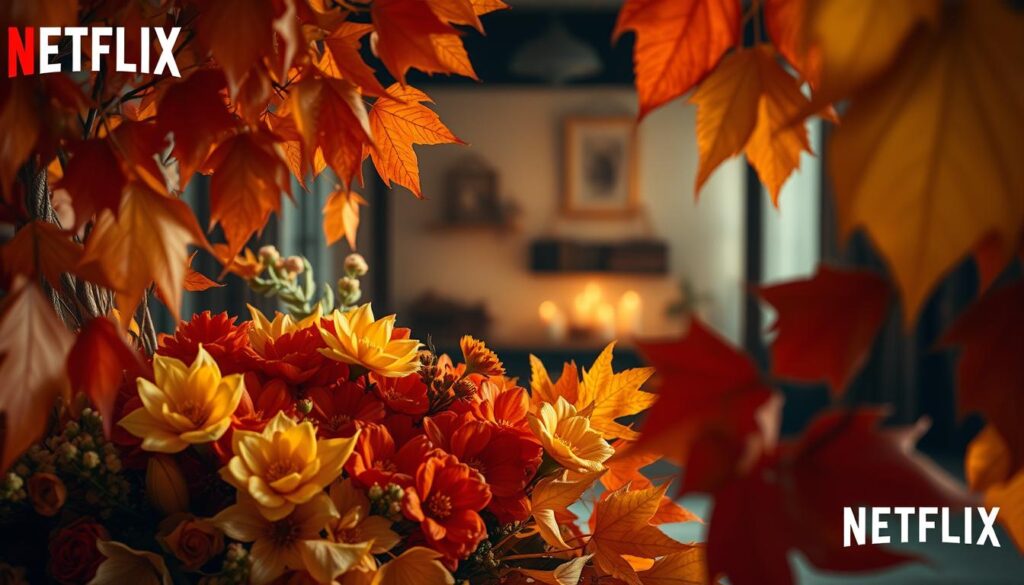
Devrim Lingnau’s Portrayal of Youthful Fertility
Devrim Lingnau’s performance as Elisabeth highlights the challenges of youthful fertility. Her character’s journey mirrors the struggles of balancing personal desires with societal expectations. This portrayal resonates with viewers, offering a fresh perspective on historical narratives.
Costume Symbolism: Pregnancy Silhouettes
The costume team used over 300 pregnancy pad variations to reflect Elisabeth’s changing body. These silhouettes symbolize the physical and emotional shifts of motherhood. In Episode 3, her wedding dress holds hidden fertility symbols, emphasizing themes of renewal and abundance.
Seasonal Motifs Mirroring Growth Cycles
Seasonal changes in the series mirror the cyclical nature of life. Floral patterns in costumes transition from budding to wilting, reflecting character arcs. This attention to detail connects the story to natural rhythms, enhancing its thematic depth.
“The survival of a dynasty often rested on the ability to produce a male heir.”
Elisabeth’s refusal to produce heirs challenges traditional fertility narratives. Her action symbolizes a quest for personal freedom, resonating with modern audiences. This theme is further explored in Season 2, where Milan protests mirror menstrual cycle activism.
- Episode 3’s wedding dress reveals hidden fertility symbols.
- Floral patterns track character growth and decline.
- Labor scene cinematography mimics contraction rhythms.
- Fan theories link Fienchen’s typhoid death to abundance lessons.
- Season 2’s Milan protests echo menstrual cycle activism.
Through its rich symbolism and storytelling, the series bridges historical and modern fertility themes. It invites viewers to reflect on the cyclical nature of life and the power of personal growth.
Comparing Tarot Imagery to Historical Fashion
Fashion and symbolism intertwine in both tarot and historical attire. Elisabeth von Wittelsbach’s coronation gown, with its draped fabrics, mirrors the flowing robes seen in the Empress card. This connection highlights how fertility themes were woven into clothing designs.
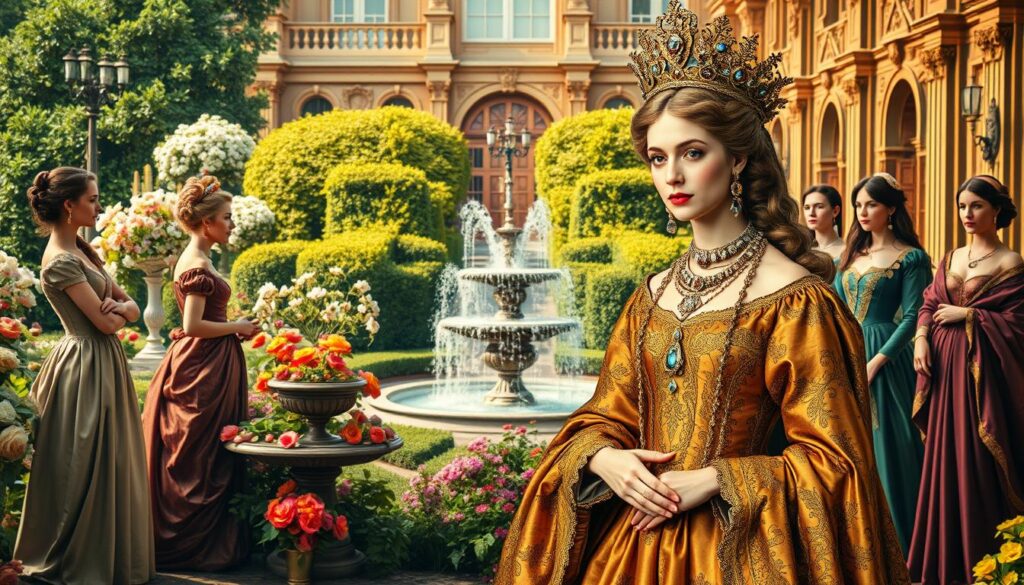
In the series, Schloss Possenhofen, a Bavarian castle, serves as a filming location. This residence adds authenticity to the portrayal of royal life. The crown in the Empress card, adorned with twelve stars, contrasts with Habsburg imperial jewels, yet both symbolize power and abundance.
Shawl motifs in the series track the progression of fertility storylines. These accessories, often intricately designed, reflect emotional and physical changes. Similarly, hidden belly chain symbolism in Season 2 intimate scenes adds layers of meaning to the narrative.
Tarot’s river imagery connects to the Danube, a setting for political negotiations in the series. This link emphasizes how natural elements were used to symbolize growth and renewal. Both tarot and historical fashion reveal deeper insights into fertility and personal power.
How Franz Joseph’s Reign Mirrors Tarot Meanings
Franz Joseph’s reign offers a fascinating lens to explore tarot’s Emperor card meanings. His leadership reflects themes of authority, structure, and stability, much like the card’s symbolism. Through his rule, we see how historical events align with tarot’s archetypes.

The Emperor and Empress as Complementary Forces
Franz Joseph and Elisabeth’s dynamic mirrors the Emperor and Empress cards. While he embodies control and order, she represents creativity and abundance. Their relationship highlights the balance between structure and growth.
Throne room scenes in the series showcase Franz Joseph’s Emperor energy. His rigid rule contrasts with Elisabeth’s adaptive approach, emphasizing their complementary roles. This duality reflects tarot’s emphasis on harmony between opposing forces.
Political Stability as Societal Fertility
Franz Joseph’s reign was marked by efforts to maintain political stability, akin to societal fertility. The 1854 railway expansion, a key plotline, symbolizes growth and connectivity. This mirrors the Emperor card’s focus on building foundations for prosperity.
Military campaigns during his rule can be seen as metaphorical miscarriages. These events disrupted stability, much like fertility challenges. Season 2’s Lombardy-Venetian conflict serves as an allegory for societal fertility crises, reflecting the fragility of growth.
Franz Joseph’s leadership, while rigid, laid the groundwork for future abundance. His reign offers valuable insights into the Emperor card’s themes of authority and legacy. By examining his rule, we gain a deeper understanding of tarot’s timeless wisdom.
Practical Abundance Rituals Inspired by The Empress
Embrace abundance through rituals inspired by timeless wisdom. Drawing from historical practices and the empress archetype, these activities can help you cultivate growth, creativity, and balance in your life. Whether you’re seeking to nurture your energy or foster prosperity, these rituals offer a meaningful way to connect with your inner power.

Start by creating moon cycle journals, inspired by Elisabeth’s dream diaries. Tracking lunar phases can help you align with natural rhythms and reflect on personal growth. Pair this with crafting fertility talismans, drawing inspiration from Wittelsbach family crests. These symbols can serve as reminders of your creative potential and resilience.
Practice boundary-setting using Sophie’s political negotiation tactics. This approach encourages you to prioritize your needs while maintaining harmony in relationships. Design abundance altars mirroring Vienna palace garden layouts. Incorporate elements like flowers, crystals, and candles to create a sacred space for reflection and renewal.
Implement “royal delegation” techniques for stress reduction. This involves identifying tasks you can delegate or simplify, allowing you to focus on what truly matters. As Gigi Griffis explores in her companion novel, royal self-care practices emphasize the importance of balance and self-compassion.
| Ritual | Purpose |
|---|---|
| Moon Cycle Journals | Track personal growth and align with natural rhythms |
| Fertility Talismans | Symbolize creativity and resilience |
| Boundary-Setting | Prioritize needs and maintain harmony |
| Abundance Altars | Create a sacred space for reflection |
| Royal Delegation | Reduce stress and focus on priorities |
These rituals invite you to honor your journey and embrace the cycles of life. By integrating these practices into your routine, you can foster a deeper sense of abundance and love for yourself and the world around you. Take time to explore what resonates with you, and let these rituals guide you toward a more fulfilling life.
Von Wittelsbach Family Legacy in Modern Culture
From castles to screens, the von Wittelsbach story captivates audiences worldwide. Their influence spans centuries, blending historical significance with modern media adaptations. Netflix’s portrayal of Elisabeth von Wittelsbach has reignited interest in this royal family, showcasing their enduring legacy.
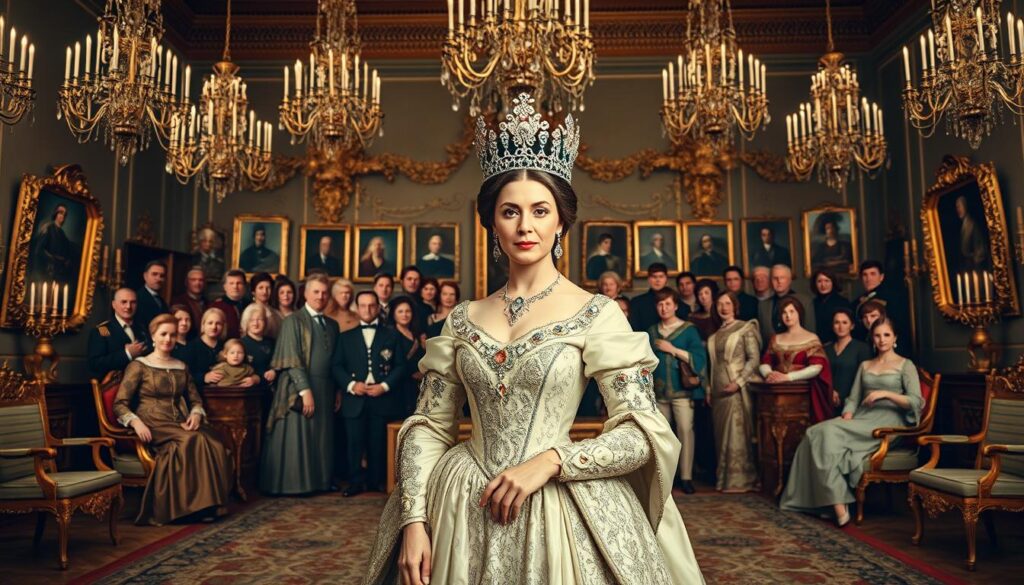
From Bavarian Castles to Netflix Screens
The von Wittelsbach family’s journey from Bavarian royalty to Netflix stardom highlights their cultural relevance. Schloss Possenhofen, a key filming location, adds authenticity to the series. This connection bridges historical and modern storytelling, making their legacy accessible to new generations.
Season 3’s renewal in 2025 confirms the ongoing fascination with their story. Fans eagerly await new plotlines, blending historical events with creative interpretations. This blend of fact and fiction keeps the news about the von Wittelsbach family fresh and engaging.
Enduring Fascination with Royal Fertility
Royal fertility remains a central theme in the von Wittelsbach narrative. Maria Sophie’s revolutionary pregnancy, portrayed by Lena Geiseler, sheds light on historical birth complications. TikTok trends like #EmpressFertilityHacks show how modern audiences connect with these themes.
Historical records reveal the pressures faced by royal women to produce heirs. These challenges are mirrored in the series, offering a nuanced perspective on fertility struggles. The von Wittelsbach family’s genetic legacy continues to shape European royal houses today.
| Aspect | Historical Context | Modern Interpretation |
|---|---|---|
| Fertility Pressures | Royal births ensured dynastic continuity | Modern fertility hacks on social media |
| Cultural Impact | Elisabeth’s coronation as Queen of Hungary | Netflix series’ global popularity |
| Legacy | Palace Achilleion as a refuge | Season 3’s anticipated storylines |
Tarot spread methods are even being used to predict Season 3’s plot twists. This blend of history, media, and mysticism keeps the von Wittelsbach legacy alive. Their story continues to inspire, offering insights into both past and present.
When to Consult The Empress Card for Guidance
Understanding when to seek guidance from tarot can transform your approach to life’s challenges. The empress card, with its themes of abundance and creativity, is particularly powerful during pivotal moments. Whether you’re navigating personal growth or making significant decisions, her wisdom can illuminate your path.
Episode 5’s city escape scene mirrors the card’s “fertile risk-taking” meaning. This action encourages stepping out of comfort zones to embrace new opportunities. Similarly, life phases mirroring Season 1’s courtship arc often call for her nurturing energy. These moments are ideal for seeking her guidance.

Creative blocks requiring Habsburg-level solutions also benefit from her insights. Her symbolism of growth and renewal can inspire innovative thinking. Timing consultations with agricultural or hormonal cycles aligns with her connection to natural rhythms, enhancing the card’s effectiveness.
Combining the Empress with the Emperor card addresses power balance issues. This pairing fosters harmony between nurturing and structured decision-making. Use her guidance during political or career advancement planning to cultivate abundance and growth.
| Situation | Guidance |
|---|---|
| Creative Blocks | Seek inspiration and renewal |
| Natural Cycles | Align with lunar or seasonal rhythms |
| Power Balance | Combine with the Emperor card |
| Career Planning | Foster abundance and growth |
Her nurturing energy is a reminder to embrace life’s transitions with confidence. By consulting the Empress card during these moments, you can unlock your potential and navigate challenges with grace.
Conclusion
Elisabeth’s journey offers a fresh perspective on personal growth and abundance. Her story transforms how we view fertility and creativity, blending historical pressures with modern struggles. Watching the series reveals stunning visual tarot references, making it a must-see for enthusiasts.
Season 3 promises to delve deeper into fertility-related plot theories, connecting past challenges to today’s reproductive advocacy. Elisabeth’s resilience mirrors the emperor’s strength, showing how balance and love can shape a legacy.
Embrace empress energy by nurturing yourself. Practices like meditation or journaling can help you connect with your inner power. For more inspiration, explore this resource to cultivate abundance in your life.

